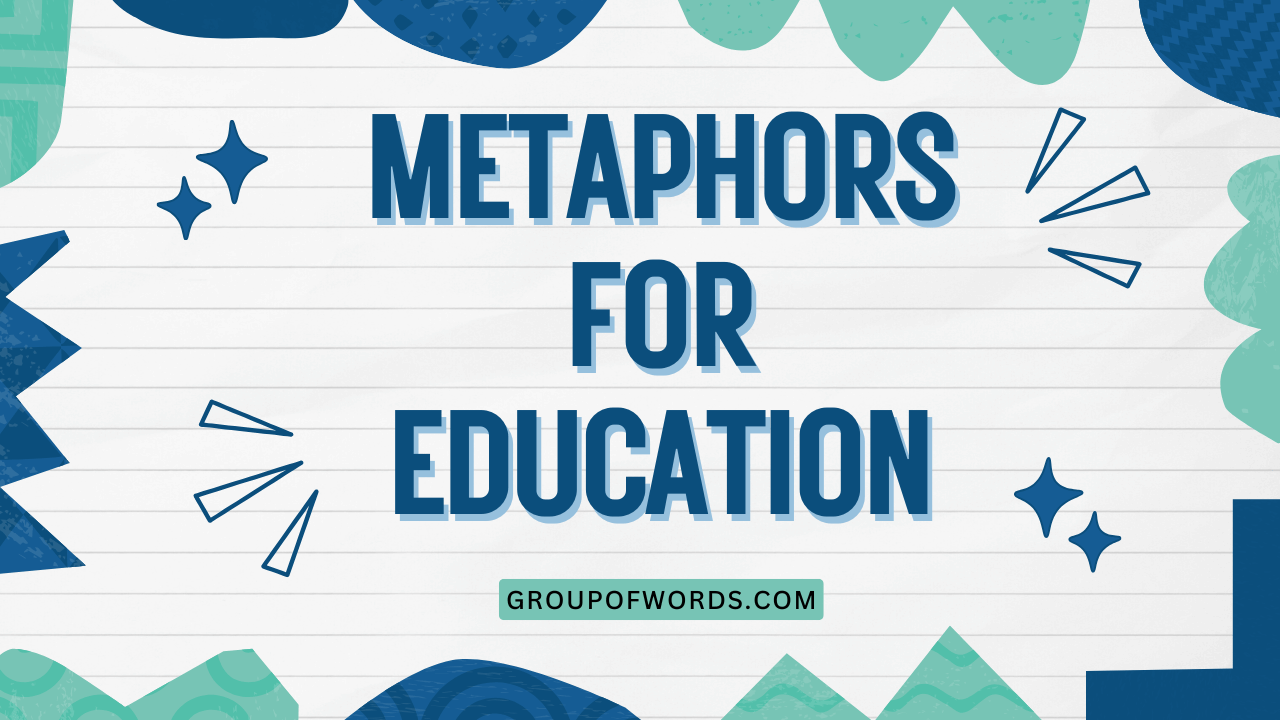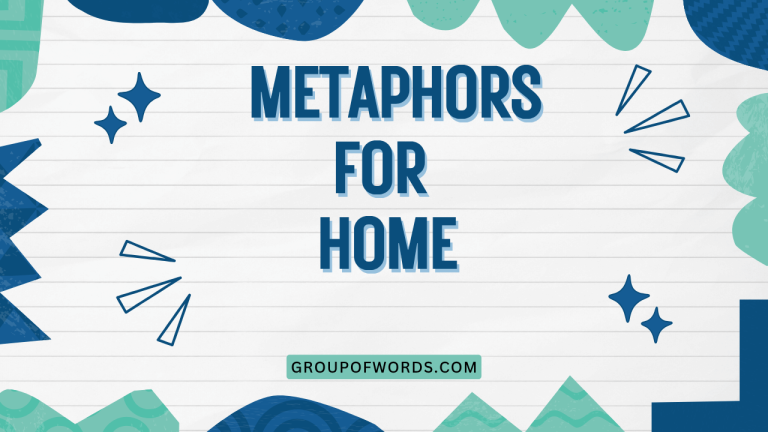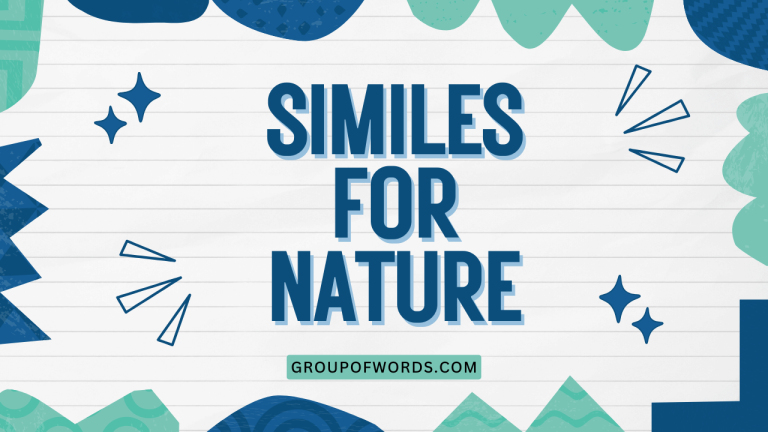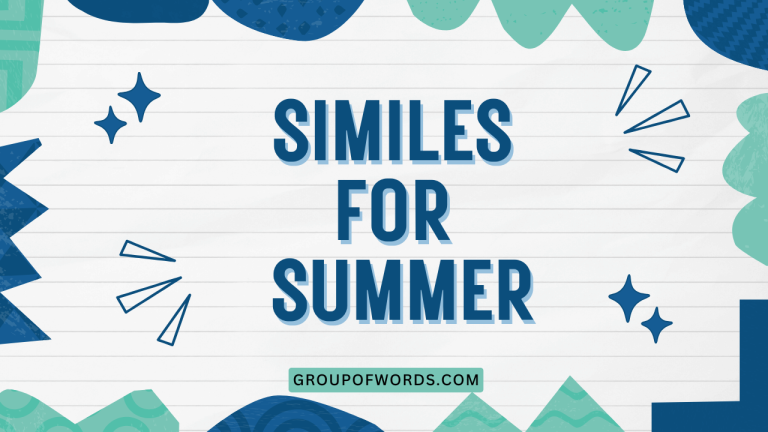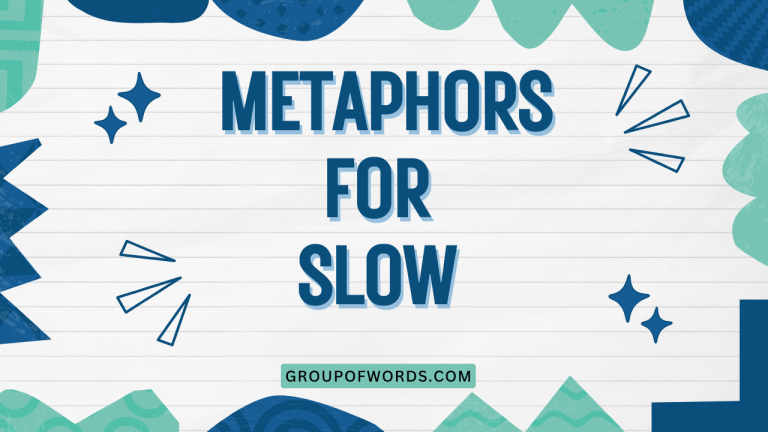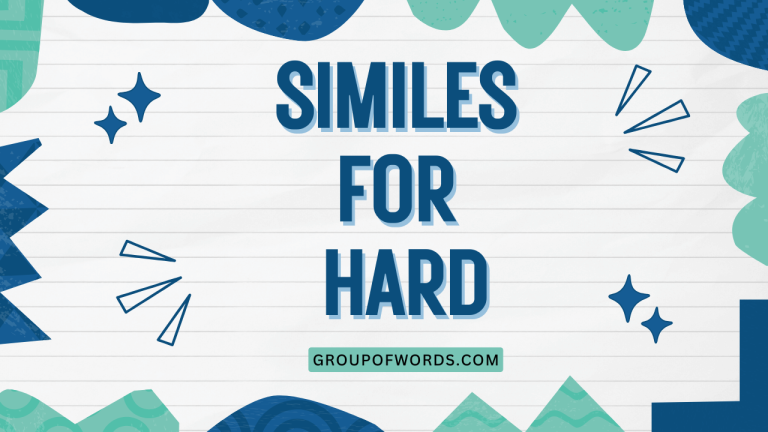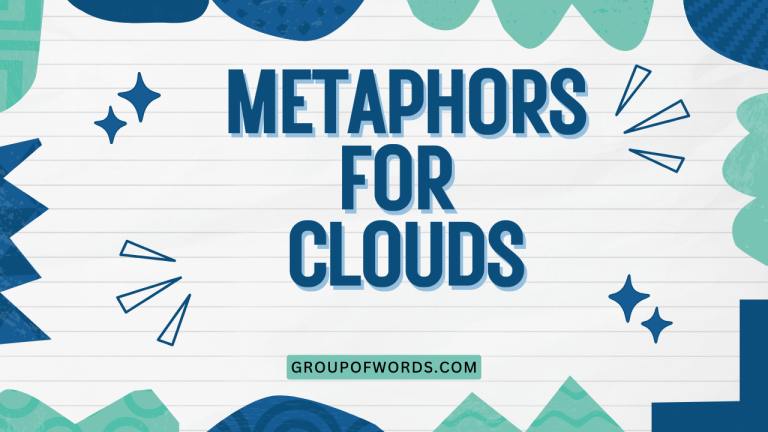Education as Metaphor: A Guide to Figurative Language
Metaphors are powerful tools in language, allowing us to understand abstract concepts by relating them to more concrete ideas. The field of education, with its many complex processes and goals, is often described through metaphors.
Understanding these metaphors can provide deeper insights into how we perceive learning, teaching, and the entire educational system. This article explores common metaphors used to describe education, their implications, and how they shape our understanding of the learning process.
This guide benefits students, teachers, parents, and anyone interested in gaining a more nuanced perspective on education.
By exploring these metaphors, we can better understand the underlying assumptions and values that influence educational practices and policies. Learning to recognize and analyze these metaphors can empower us to critically evaluate educational approaches and advocate for more effective and equitable learning environments.
Table of Contents
- Introduction
- Definition of Metaphor in Education
- Structural Breakdown of Metaphors
- Types of Metaphors for Education
- Examples of Metaphors in Education
- Usage Rules for Metaphors
- Common Mistakes When Using Metaphors
- Practice Exercises
- Advanced Topics in Educational Metaphors
- Frequently Asked Questions
- Conclusion
Definition of Metaphor in Education
A metaphor is a figure of speech that directly compares two unrelated things, asserting that one *is* the other, to highlight certain similarities and create a deeper understanding. Unlike similes, which use words like “like” or “as” to make comparisons, metaphors make a direct equation. In the context of education, metaphors are used to describe the abstract processes of learning, teaching, and development by likening them to more tangible and relatable concepts.
The function of a metaphor in education is multifaceted. First, it simplifies complex ideas, making them more accessible and understandable.
Second, it adds vividness and emotional resonance to discussions about education, engaging the audience more effectively. Third, it can reveal underlying assumptions and biases about education, prompting critical reflection and reevaluation of existing practices.
Finally, effective metaphors can inspire new approaches and innovations in teaching and learning.
Metaphors can be found in various contexts within education, including policy documents, academic research, classroom discussions, and everyday conversations about learning. They shape how educators design curricula, how students approach learning, and how society views the role of education.
Structural Breakdown of Metaphors
Understanding the structure of a metaphor can help us analyze its meaning and implications more effectively. A typical metaphor consists of two main elements: the tenor and the vehicle.
- Tenor: This is the subject of the metaphor, the concept or idea being described. In the context of education, the tenor might be learning, teaching, the curriculum, or the educational system itself.
- Vehicle: This is the object or concept used to describe the tenor. It is the more concrete or familiar idea that helps us understand the tenor in a new light. For example, if we say “education is a journey,” education is the tenor, and journey is the vehicle.
The relationship between the tenor and the vehicle is crucial. The vehicle should possess qualities or characteristics that resonate with the tenor, highlighting specific aspects and creating a meaningful comparison.
The effectiveness of a metaphor depends on how well the vehicle illuminates the tenor and how relevant the shared characteristics are to the intended message.
Consider the metaphor “a student is a blank slate.” Here, “student” is the tenor, and “blank slate” is the vehicle. The metaphor suggests that students are initially without knowledge and are shaped by their experiences and education.
Understanding this structure allows us to analyze the assumptions underlying this metaphor, such as the idea that students are passive recipients of knowledge.
Types of Metaphors for Education
Numerous metaphors are used to describe education, each emphasizing different aspects of the learning process. Here are some of the most common types:
Education as a Journey
This metaphor portrays education as a process of exploration and discovery, with students as travelers embarking on a quest for knowledge. Teachers are guides, helping students navigate unfamiliar terrain and overcome obstacles.
The curriculum is the map, outlining the path and highlighting key landmarks. This metaphor emphasizes the importance of perseverance, curiosity, and the transformative power of learning.
Education as Building
This metaphor likens education to the construction of a building. Knowledge is the foundation, skills are the building blocks, and critical thinking is the architectural design.
Teachers are the builders, carefully laying each brick and ensuring a solid structure. This metaphor highlights the importance of a strong foundation, systematic learning, and the cumulative nature of knowledge.
Education as Gardening
This metaphor views students as plants, and teachers as gardeners nurturing their growth. The curriculum is the soil, providing the necessary nutrients for development.
Teachers cultivate students’ talents, prune away weaknesses, and create a supportive environment for them to flourish. This metaphor emphasizes the importance of individualized attention, patience, and fostering natural growth.
Education as Transformation
This metaphor sees education as a process of profound change, where students undergo a metamorphosis. Knowledge is the catalyst, and learning is the crucible where transformation occurs.
Teachers are facilitators, guiding students through this process of self-discovery and personal growth. This metaphor highlights the empowering and life-altering potential of education.
Education as Banking
This metaphor, often criticized, views students as empty receptacles into which teachers deposit knowledge. The teacher is the active agent, and the student is the passive recipient.
This metaphor reinforces a hierarchical power dynamic and undermines the importance of critical thinking and student agency. This metaphor is often associated with traditional, rote-learning approaches to education.
Examples of Metaphors in Education
The following tables provide examples of each type of metaphor discussed above, illustrating how they are used in different contexts.
Table 1: Education as a Journey
This table presents examples of the “Education as a Journey” metaphor, showcasing how the learning process is compared to travel and exploration.
| Metaphorical Statement | Explanation |
|---|---|
| “Learning is a lifelong journey.” | Education is not a destination but a continuous process of growth and discovery. |
| “The curriculum is a roadmap to success.” | The curriculum provides guidance and direction, helping students navigate their educational path. |
| “Teachers are guides, leading students through the educational landscape.” | Teachers provide support, direction, and expertise, helping students navigate the challenges of learning. |
| “Students embark on a quest for knowledge.” | Learning is an active pursuit of understanding and information. |
| “The classroom is a launching pad for future endeavors.” | Education provides the foundation and skills needed to succeed in later life. |
| “Each lesson is a step on the path to mastery.” | Learning is a gradual process, with each lesson building upon the previous one. |
| “Education is an expedition into the unknown.” | Learning involves exploring new ideas and concepts. |
| “Tests are checkpoints along the way.” | Assessments are used to gauge progress and identify areas for improvement. |
| “Graduation is the summit of their academic journey.” | Completing a degree or program is a significant achievement. |
| “Learning is like climbing a mountain.” | It requires effort, perseverance, and a willingness to overcome challenges. |
| “The library is a treasure trove of knowledge.” | Libraries offer a vast collection of resources and information. |
| “Research is venturing into uncharted territory.” | Research involves exploring new frontiers of knowledge. |
| “Education is the compass that guides us.” | Education provides direction and purpose in life. |
| “Our minds are vehicles for exploration.” | Our minds enable us to discover new ideas and concepts. |
| “The internet is an ocean of information.” | The internet provides access to a vast amount of information. |
| “Teachers are navigators in the sea of knowledge.” | Teachers help students find their way through the complexities of learning. |
| “Learning is a voyage of discovery.” | Learning involves exploring new ideas and perspectives. |
| “Education is the key to unlocking new worlds.” | Education opens up opportunities and expands horizons. |
| “Each new skill is a tool for the journey ahead.” | Skills are essential for navigating the challenges of life. |
| “Education is the pathway to a brighter future.” | Education provides hope and opportunity for a better life. |
| “The teacher is a skilled cartographer, mapping out the student’s learning path.” | The teacher carefully plans and guides the student’s learning experience. |
| “A student’s curiosity is their most reliable compass.” | Curiosity guides the student toward new knowledge and understanding. |
| “The classroom is a port of call, where students gather to replenish their knowledge.” | The classroom provides a space for learning and sharing ideas. |
Table 2: Education as Building
This table showcases the “Education as Building” metaphor, demonstrating how learning is likened to constructing a structure, with knowledge as the foundation.
| Metaphorical Statement | Explanation |
|---|---|
| “Knowledge is the foundation of a good education.” | Basic knowledge provides the basis for further learning. |
| “Skills are the building blocks of success.” | Skills are essential for achieving goals and accomplishments. |
| “Critical thinking is the architecture of learning.” | Critical thinking provides the structure and design for understanding. |
| “Teachers are the builders of young minds.” | Teachers play a key role in shaping and developing students’ intellect. |
| “Each lesson is a brick in the wall of knowledge.” | Lessons contribute to the overall structure of understanding. |
| “A strong education is a well-constructed edifice.” | A comprehensive education leads to a robust and lasting understanding. |
| “The curriculum is the blueprint for learning.” | The curriculum provides the plan and structure for education. |
| “Ideas are the girders that support our understanding.” | Ideas provide the strength and stability for our knowledge. |
| “Research is the scaffolding that supports new discoveries.” | Research provides the framework and support for innovation. |
| “Education is the construction of a better future.” | Education provides the means to build a more prosperous and equitable society. |
| “Understanding is the mortar that binds knowledge together.” | Understanding connects and integrates different pieces of information. |
| “Creativity is the ornamentation that makes learning beautiful.” | Creativity adds artistry and enjoyment to the learning process. |
| “Experience is the cornerstone of wisdom.” | Experience provides the foundation for sound judgment and insight. |
| “Collaboration is the teamwork that builds strong communities.” | Collaboration fosters cooperation and strengthens relationships. |
| “Education is the framework upon which we build our lives.” | Education provides the structure and support for personal growth and development. |
| “Teachers lay the groundwork for future success.” | Teachers provide the initial skills and knowledge that students need to succeed. |
| “Each assignment is a carefully placed beam, strengthening the structure of understanding.” | Assignments reinforce learning and build a deeper comprehension of the subject matter. |
| “A solid foundation in the basics is essential for constructing advanced knowledge.” | Mastering fundamental concepts is crucial for progressing to more complex topics. |
| “The classroom is a construction site, where students actively build their knowledge.” | The classroom provides a space for students to engage in hands-on learning and knowledge creation. |
| “Education provides the tools and materials to construct a successful life.” | Education equips individuals with the resources they need to achieve their goals. |
| “Teachers carefully design the architecture of their lessons to maximize learning.” | Teachers plan and structure their lessons to facilitate effective knowledge acquisition. |
| “Students are the architects of their own learning, designing their paths to success.” | Students take ownership of their learning and create personalized strategies for achieving their goals. |
| “The school is a workshop, where students hone their skills and build their competencies.” | The school provides a space for students to develop their abilities and prepare for future challenges. |
Table 3: Education as Gardening
This table explores the “Education as Gardening” metaphor, illustrating how students are likened to plants, and teachers to gardeners, nurturing growth and development.
| Metaphorical Statement | Explanation |
|---|---|
| “Students are like seeds, full of potential.” | Each student has unique talents and abilities waiting to be nurtured. |
| “Teachers are gardeners, nurturing young minds.” | Teachers provide care, guidance, and support to help students grow. |
| “The curriculum is the fertile ground for learning.” | The curriculum provides the resources and environment for students to flourish. |
| “Education is the cultivation of knowledge and skills.” | Education involves developing and refining students’ abilities. |
| “Patience is essential in the garden of learning.” | It takes time and care for students to grow and develop. |
| “Each student requires individualized attention.” | Teachers need to tailor their approach to meet the unique needs of each student. |
| “Weeding out misconceptions is crucial for growth.” | Addressing and correcting errors is essential for learning. |
| “Encouragement is the sunshine that helps students thrive.” | Positive reinforcement motivates and inspires students. |
| “Challenges are the rain that nourishes growth.” | Overcoming obstacles builds resilience and strength. |
| “Education is the process of helping students blossom.” | Education enables students to reach their full potential. |
| “The classroom is a greenhouse, providing a safe and nurturing environment.” | The classroom offers a supportive space for students to learn and grow. |
| “Feedback is the fertilizer that enriches learning.” | Constructive criticism helps students improve and develop. |
| “Mentoring is like grafting, connecting students to new possibilities.” | Mentors provide guidance and support, helping students explore new opportunities. |
| “Learning is the process of rooting oneself in knowledge.” | Learning involves establishing a strong foundation of understanding. |
| “Creativity is the flower that blooms in the garden of education.” | Creativity adds beauty and innovation to the learning process. |
| “Teachers provide the water and sunlight for students to flourish.” | Teachers provide the essential resources and support for student growth. |
| “Assessment is the process of checking the soil and ensuring the plants are healthy.” | Assessments help teachers monitor student progress and identify areas for improvement. |
| “A well-tended garden of education yields a bountiful harvest of knowledge and skills.” | Effective education produces well-rounded and capable individuals. |
| “Students are carefully cultivated, each nurtured according to their unique needs.” | Teachers tailor their approach to meet the individual requirements of each student. |
| “Education is the art of fostering natural talents and pruning away weaknesses.” | Education involves developing strengths and addressing areas for improvement. |
| “The teacher is a skilled horticulturist, tending to the diverse needs of each plant in their garden.” | The teacher is adept at understanding and responding to the unique requirements of each student. |
| “Students are like seedlings, requiring patience and careful nurturing to reach their full potential.” | Students need time and support to grow and develop into successful individuals. |
| “The classroom is a thriving ecosystem, where students learn and grow together.” | The classroom provides a community where students can collaborate and support each other’s learning. |
Table 4: Education as Transformation
This table illustrates the “Education as Transformation” metaphor, highlighting how learning is akin to a process of profound change and metamorphosis.
| Metaphorical Statement | Explanation |
|---|---|
| “Education is a transformative experience.” | Education has the power to change individuals in profound ways. |
| “Learning is a metamorphosis, turning students into knowledgeable individuals.” | Learning involves a significant change in understanding and abilities. |
| “Knowledge is the key that unlocks potential.” | Knowledge opens up opportunities and possibilities. |
| “Education is the crucible where ideas are forged.” | Education is a place where ideas are tested and refined. |
| “Students emerge from education as new and improved versions of themselves.” | Education leads to personal growth and development. |
| “The classroom is a cocoon, where students transform into confident learners.” | The classroom provides a safe and supportive environment for growth. |
| “Education is like alchemy, turning ordinary minds into extraordinary ones.” | Education has the power to elevate and enhance intellectual abilities. |
| “Learning is the process of shedding old beliefs and embracing new perspectives.” | Learning involves challenging assumptions and adopting new viewpoints. |
| “Education empowers students to become agents of change.” | Education enables students to make a positive impact on the world. |
| “The mind is a chrysalis, undergoing a profound transformation through education.” | The mind experiences significant growth and development during education. |
| “Education is the catalyst that sparks personal and intellectual growth.” | Education initiates and accelerates the process of development. |
| “Knowledge is the fuel that propels students toward their goals.” | Knowledge provides the energy and motivation to achieve success. |
| “Learning is the process of refining raw potential into polished skills.” | Learning involves developing and perfecting abilities. |
| “Teachers are the guides who lead students through the transformative journey of education.” | Teachers provide support and direction during the process of change. |
| “The curriculum is designed to facilitate a profound and lasting transformation in students’ lives.” | The curriculum aims to create significant and enduring changes in students. |
| “Education is a journey of self-discovery, leading to a deeper understanding of oneself and the world.” | Education encourages self-reflection and a broader perspective on life. |
| “Teachers are like sculptors, helping students mold themselves into their best versions.” | Teachers assist students in shaping their character and abilities. |
| “The classroom is a laboratory, where students experiment with new ideas and transform their thinking.” | The classroom provides a space for exploration and intellectual growth. |
| “Education is the alchemical process of turning ignorance into enlightenment.” | Education has the power to transform lack of knowledge into understanding and wisdom. |
| “Students emerge from the educational experience reborn, with a new sense of purpose and direction.” | Education provides students with a renewed sense of motivation and determination. |
| “Teachers are catalysts, facilitating the transformation of students into knowledgeable and capable individuals.” | Teachers play a vital role in helping students grow and develop their potential. |
| “Students embark on a transformative odyssey, emerging wiser and more enlightened.” | Students undergo a profound journey of learning that leads to increased knowledge and understanding. |
| “The educational process refines students like precious metals, enhancing their value and worth.” | Education elevates students’ abilities and prepares them for success. |
Table 5: Education as Banking
This table presents examples of the “Education as Banking” metaphor, a critical and often negative view of education as a process of depositing knowledge into passive recipients.
| Metaphorical Statement | Explanation |
|---|---|
| “Teachers deposit knowledge into students’ minds.” | Knowledge is seen as something transferred from teacher to student. |
| “Students are empty vessels waiting to be filled.” | Students are viewed as passive recipients of information. |
| “Education is the accumulation of facts and figures.” | Learning is reduced to memorization and recall. |
| “Teachers make deposits of information, which students store for later withdrawal.” | Teachers deliver information, and students retain it for future use. |
| “Students are like savings accounts, accumulating knowledge over time.” | Students are seen as passively collecting information. |
| “The classroom is a bank, where knowledge is stored and dispensed.” | The classroom is viewed as a place for the passive transfer of information. |
| “Education is a transaction, with teachers giving and students receiving.” | Learning is seen as a one-way process. |
| “Students are like computers, storing and retrieving information.” | Students are viewed as machines for processing data. |
| “Teachers are the tellers, dispensing knowledge to eager customers.” | Teachers are seen as providers of information. |
| “The curriculum is the vault, filled with valuable information.” | The curriculum is viewed as a collection of facts and figures. |
| “Students are expected to withdraw knowledge on demand during exams.” | Students are expected to recall information when tested. |
| “Education is a process of filling students’ heads with information.” | Learning is reduced to simply memorizing facts. |
| “Teachers are the experts, and students are the novices.” | Students are seen as lacking knowledge and experience. |
| “Critical thinking is discouraged, as students are expected to accept information passively.” | Students are not encouraged to question or analyze information. |
| “Students who memorize the most information are considered the most successful.” | Success is measured by the ability to recall facts. |
| “The classroom is a sterile environment, where creativity and innovation are stifled.” | The classroom lacks opportunities for creative expression. |
| “Teachers lecture, and students take notes, passively absorbing the information.” | Students are not actively engaged in the learning process. |
| “The educational system is designed to produce compliant workers, not critical thinkers.” | The system prioritizes conformity over independent thought. |
| “Students are treated as commodities, to be processed and packaged for the job market.” | Students are seen as products to be prepared for employment. |
| “The banking model of education perpetuates inequality, as some students have more access to resources and information than others.” | The system reinforces disparities in educational opportunities. |
| “Teachers deposit information into their students’ minds, expecting them to regurgitate it on tests.” | Teachers prioritize rote memorization over genuine understanding. |
| “Students are treated as passive recipients, their curiosity and creativity stifled by the rigid structure of the curriculum.” | Students’ individuality and imagination are suppressed in favor of conformity. |
| “The classroom becomes a sterile environment, where learning is reduced to a mechanical process of information transfer.” | The classroom lacks the vibrancy and dynamism needed to foster genuine learning. |
Usage Rules for Metaphors
While metaphors can be powerful tools, it’s important to use them effectively and avoid common pitfalls. Here are some rules to guide your use of metaphors in education:
- Clarity: Choose metaphors that are clear and easily understood by your audience. Avoid obscure or overly complex comparisons.
- Relevance: Ensure that the vehicle is relevant to the tenor and that the shared characteristics are meaningful.
- Consistency: Maintain consistency within a metaphor. Avoid mixing metaphors or shifting between different comparisons in a confusing way.
- Originality: Strive for originality and creativity. Avoid overused or clichéd metaphors that have lost their impact.
- Appropriateness: Consider the context and audience when choosing a metaphor. Ensure that it is appropriate for the situation and resonates with the intended message.
- Avoid Mixed Metaphors: Don’t combine two or more incompatible metaphors in a single expression, as this can create confusion or absurdity. For example, saying “We need to nip it in the bud to iron out the wrinkles” mixes gardening and ironing metaphors.
Common Mistakes When Using Metaphors
Even experienced writers and speakers can make mistakes when using metaphors. Here are some common errors to avoid:
Table 6: Correct vs. Incorrect Metaphor Usage
This table illustrates common mistakes in using metaphors and provides corrections for better clarity and effectiveness.
| Incorrect | Correct | Explanation |
|---|---|---|
| “The education system is a train wreck heading for disaster.” | “The education system is a train struggling to stay on the tracks.” | The original metaphor is too extreme and lacks nuance. The revised version is more measured and realistic. |
| “The curriculum is a jungle gym where students climb the ladder to success.” | “The curriculum is a ladder, helping students climb to new heights of knowledge.” | The original metaphor mixes two different images (jungle gym and ladder), creating confusion. The revised version maintains a single, consistent image. |
| “Teachers are like shining stars illuminating the path for their students like a lighthouse.” | “Teachers are like lighthouses, illuminating the path for their students.” | The original metaphor uses both simile (“like shining stars”) and metaphor (“illuminating the path”), creating redundancy. The revised version uses a single, clear metaphor. |
| “The student’s mind is a sponge, ready to soak up all the information like a desert.” | “The student’s mind is a sponge, ready to soak up all the information.” | The comparison to a desert is illogical and contradictory. Sponges soak up water; deserts are dry. The revised version removes the confusing element. |
| “Education is a battlefield where students fight for grades and teachers are the generals leading the charge.” | “Education is a journey where students strive for excellence, and teachers are guides.” | The original metaphor is overly aggressive and negative. The revised version offers a more positive and constructive perspective. |
| “The classroom is a pressure cooker where students are under constant scrutiny like a magnifying glass.” | “The classroom is a collaborative space where students learn and grow together.” | The original metaphor creates a stressful and negative image. The revised version offers a more supportive and positive perspective. |
| “The student’s potential is a sleeping giant, waiting to erupt.” | “The student’s potential is a seed, waiting to sprout.” | The original metaphor is too violent and dramatic. The revised version offers a more gentle and nurturing image. |
Practice Exercises
Test your understanding of metaphors in education with these exercises.
Exercise 1: Identify the Metaphor
Identify the metaphor in each sentence and explain its meaning.
Table 7: Practice Exercise 1
| Question | Answer |
|---|---|
| 1. “The internet is a vast library, filled with endless information.” | Metaphor: The internet is a vast library. Meaning: The internet provides access to a huge amount of information, like a library. |
| 2. “Education is the ladder to success.” | Metaphor: Education is the ladder. Meaning: Education helps one climb to success. |
| 3. “Students are seeds that need nurturing to grow.” | Metaphor: Students are seeds. Meaning: Students need care and support to develop their potential. |
| 4. “The teacher is a guide, leading students through the maze of knowledge.” | Metaphor: The teacher is a guide. Meaning: The teacher helps students navigate the complexities of learning. |
| 5. “Learning is a journey of discovery.” | Metaphor: Learning is a journey. Meaning: Learning involves exploring new ideas and concepts. |
| 6. “The mind is a garden that needs to be cultivated.” | Metaphor: The mind is a garden. Meaning: The mind needs to be nurtured and developed. |
| 7. “Education is the bridge to a better future.” | Metaphor: Education is the bridge. Meaning: Education connects one to a more promising future. |
| 8. “Students are sponges, soaking up knowledge.” | Metaphor: Students are sponges. Meaning: Students absorb information readily. |
| 9. “The classroom is a melting pot of ideas.” | Metaphor: The classroom is a melting pot. Meaning: The classroom is a place where diverse ideas come together. |
| 10. “Tests are stepping stones to success.” | Metaphor: Tests are stepping stones. Meaning: Tests help students progress towards their goals. |
Exercise 2: Create a Metaphor
Create a metaphor for each of the following concepts:
Table 8: Practice Exercise 2
| Concept | Your Metaphor |
|---|---|
| 1. The role of a parent in education | A parent is a home base, providing support and encouragement. |
| 2. The purpose of homework | Homework is the practice field where students hone their skills. |
| 3. The importance of critical thinking | Critical thinking is the compass that guides us through complex information. |
| 4. The value of lifelong learning | Lifelong learning is a continuous adventure, full of new discoveries. |
| 5. The impact of technology on education | Technology is a toolbox, providing educators with new ways to engage students. |
| 6. The role of creativity in education | Creativity is the spark that ignites innovation in education. |
| 7. The importance of collaboration in the classroom | Collaboration is the team sport of learning, where everyone contributes to success. |
| 8. The value of perseverance in education | Perseverance is the engine that drives students through challenges. |
| 9. The impact of failure on learning | Failure is a detour that leads to a more scenic route to success. |
| 10. The role of curiosity in education | Curiosity is the key that unlocks the door to knowledge. |
Advanced Topics in Educational Metaphors
For advanced learners, exploring the theoretical underpinnings of metaphors and their impact
on cognitive processes can provide a deeper understanding of how metaphors shape our thinking about education. Consider researching the works of scholars like George Lakoff and Mark Johnson, who have extensively studied the role of metaphors in shaping human thought and language.
Additionally, exploring the use of metaphors in educational policy and reform can reveal how these figures of speech influence decision-making and shape the direction of educational initiatives.
Frequently Asked Questions
This section addresses some common questions related to metaphors in education.
Table 9: Frequently Asked Questions
| Question | Answer |
|---|---|
| 1. Why are metaphors important in education? | Metaphors simplify complex concepts, add vividness to discussions, reveal underlying assumptions, and inspire new approaches to teaching and learning. |
| 2. What are the key elements of a metaphor? | The key elements are the tenor (the subject being described) and the vehicle (the object or concept used to describe the tenor). |
| 3. How can I avoid using mixed metaphors? | Ensure that the images and concepts within a metaphor are consistent and compatible. Avoid combining unrelated ideas in a single expression. |
| 4. What is the “education as banking” metaphor, and why is it criticized? | The “education as banking” metaphor views students as empty receptacles into which teachers deposit knowledge. It is criticized for reinforcing a hierarchical power dynamic and undermining critical thinking and student agency. |
| 5. How can I use metaphors effectively in my teaching? | Choose clear and relevant metaphors, maintain consistency, strive for originality, and consider the context and audience. |
| 6. Can metaphors be harmful in education? | Yes, if they are unclear, irrelevant, or perpetuate negative stereotypes or assumptions. It’s important to use metaphors thoughtfully and critically. |
| 7. How do metaphors influence educational policy? | Metaphors can shape the way policymakers understand and address educational challenges. They can influence the design of curricula, the allocation of resources, and the implementation of reforms. |
| 8. What are some alternative metaphors to “education as banking”? | Alternative metaphors include “education as a journey,” “education as building,” “education as gardening,” and “education as transformation,” each emphasizing different aspects of the learning process. |
| 9. How can students benefit from understanding metaphors in education? | Students can gain a deeper understanding of the learning process, critically evaluate educational approaches, and develop more effective learning strategies. |
| 10. Why is it important to analyze the underlying assumptions of educational metaphors? | Analyzing the underlying assumptions can reveal biases and limitations, prompting critical reflection and reevaluation of existing practices. |
Conclusion
Metaphors are integral to how we understand and communicate about education. By recognizing and analyzing these metaphors, we can gain deeper insights into the values, assumptions, and beliefs that shape our educational practices and policies.
Whether we view education as a journey, a building, a garden, or a transformation, the metaphors we use influence how we approach teaching, learning, and the overall educational experience. Embracing a critical and reflective approach to metaphors empowers us to create more effective, equitable, and inspiring learning environments for all.
